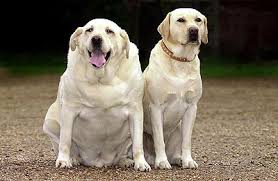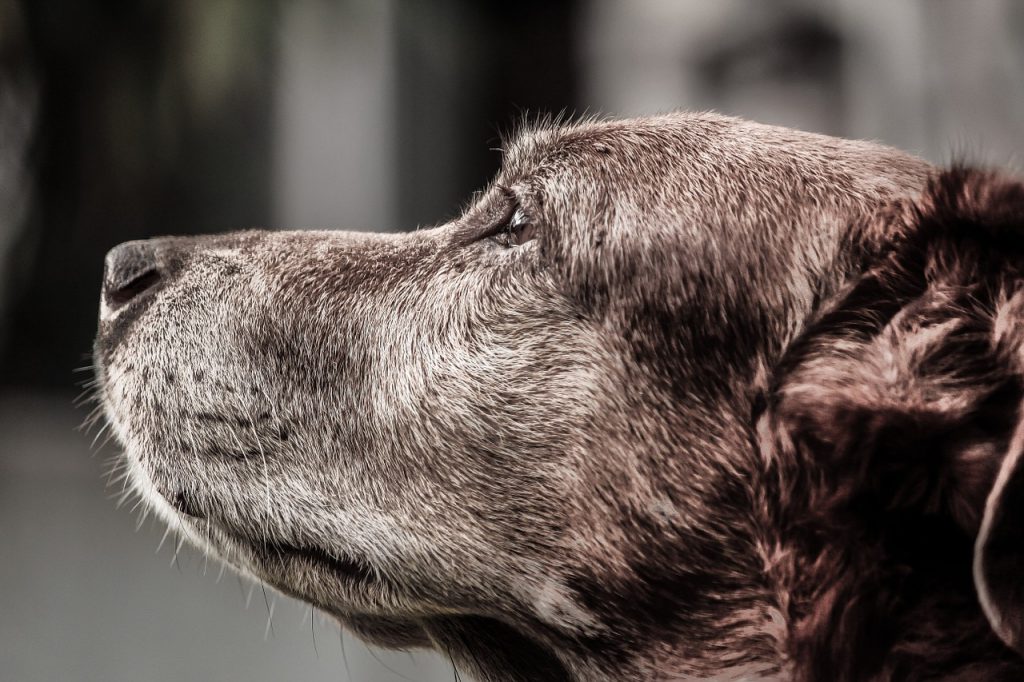Did you know that 20% of dogs suffer from osteoarthritis?
Arthritis is a progressive degenerative disease affecting the joints of dogs. It can affect dogs of all breeds, sizes, shapes, and age groups. For many it’s from prolonged wear and tear as they age. For others it is due to injury, surgery, or predisposing conditions like hip or elbow dysplasia.
The joint degeneration of arthritis leads to pain and inflammation. It also increases the sensitivity of the nerves, so otherwise innocuous movements / stimulus lead to more pain. This can be debilitating to dogs if left untreated.
Early Signs of Arthritis:
As dogs age they often slow down, but slowing down may also be due to pain in the joints. Slowness to rise after lying down, reluctance to get up off their bed, jump on the couch, or into the car may all be early signs of arthritis. Your dog may also avoid being touched, especially in sore areas. They may look hunched over and in later stages they may develop a limp.
Younger dogs may also show signs of arthritis if they’ve been diagnosed with conditions like hip or elbow dysplasia, a cranial cruciate ligament tear, shoulder instability or OCD.
Regardless of your dogs age, familiarity with common signs of arthritis can result in faster intervention and management, leading to improved quality of life.
Principles of Home Treatment:
Arthritis can’t be cured. There are however a number of treatment options that can keep your dog comfortable, happy and healthy.
Modification of the Home Environment
Making sure your home and car are set up for your dog with arthritis can reduce pain and flare ups.
Jumping: Minimize or avoid jumping on or off high places – sofa’s, beds, cars. A dog ramp or stairs may be an appropriate management tool, or another option is to use a harness like the help-em up harness.
If your dog jumps up to greet you or others, you may want to teach them not to jump. One idea is to have food outside and scatter it on the floor as you enter.
Non-slip floors: Make sure you have non slip flooring in your dog’s main traffic areas e.g. rugs, carpet. Not only will it stop them from sliding if they’re running around but it will also help them get up without slipping, especially if they tend to lie on the hard floors in hotter weather. If rugs aren’t an option you may consider booties such as the Ruffwear brand.
Bedding: As important as our mattress is for a comfy nights sleep, the same is true for dogs. A hammock style bed, or a soft bed, would be similar to you sleeping in a hammock, or lying on your soft sofa, when you’ve got a sore low back. Your dog will benefit from a firm supportive mattress that’s easy to get on and off.
If you would like more information on the best dog beds for Arthritis click here.
Ideal Weight Range: Studies have shown that dogs fed a restricted diet to control weight on average had a 33% reduction in osteoarthritis prevalence and on average enjoyed two years additional life expectancy.
- Weight control in dogs is no different to us. If your dog needs to lose weight they need to burn more energy than they consume. If your dog is not losing weight then they’re eating too much for the energy they’re burning. You need to decrease the amount of food they are eating and/or increase their exercise where possible. If exercise is limited by pain, then you could try hydrotherapy or swimming. Check out my article to determine if your dog is in its ideal weight range.

Good nutrition: While weight loss is about consuming less energy than you burn, it’s also about eating good quality foods that contain a range of important nutrients. Even if your dog is in the ideal weight range the quality of their food is important. You may also consider supplements such as omega 3, or glucosamine and chondroitin supplements. I’ll discuss this further below.
Avoidance of Aggravating Factors
There are two main mechanisms for pain generation – either mechanical or inflammatory.
Mechanical Pain: In mechanical pain joints are sore at the time of activity. In this case you may see limping or altered gait regress over time.
Inflammatory Pain: In inflammatory pain patterns movement actually makes the joint feel better, so gait may improve. It’s only afterwards, and the next morning that the pain becomes worse.
These are important factors to distinguish when looking at aggravating factors as it may be what your dog did the day before that made your dog sore today.
Off leash Running: If your dog likes to run around madly chasing the ball or other dogs, then the repeated twisting, turning and sudden stopping / starting can make arthritic joints sore and inflamed.
If you still want your dog to have some off leash time, just be mindful of the intensity, as well as the frequency and duration. I’m sure you’d pull up sore if you played your first game of social touch / soccer when you haven’t played in a while.
Beach time: If your dog is anything like mine, then they love the beach. Unfortunately running around in soft sand is even more taxing on joints than running around at the park. If you still want to take your dog to the beach, stick to the firmer sand and preferably leash or controlled walking. Swimming may also be another option.
Weekend Warrior: If you’ve never heard the term “weekend warrior” it basically depicts a person (or in this case dog) that does nothing all week then goes out on the weekend and “makes up for it”. This is not ideal in any circumstance, however, it’s even worse if your dog has arthritis. This approach to exercise can over stress the joints, leading to pain and inflammation.
The Importance of Regular Exercise
It important to note that regular exercise is really important for the ongoing health of your dogs joints. Strong healthy muscles support joints in dogs, just like they do in humans. Find a routine that is regular with enough intensity but not too much.
In humans, 30 minutes of moderate intensity exercise on five, if not all, days of the week is considered a good base point. With your dog it may not be too dissimilar, but it is going to depend on their size and breed. If walking aggravates your dog you may consider swimming or hydrotherapy.
Supplements
- Omega 3 Fatty Acids: Natures anti-inflammatory. You can look at natural options like sardines, good quality dry pet food with additional omega’s, fish oil, or omega 3 supplements.
- Glucosamine and Chondroitin Sulfate: Known as chondroprotectants, this class of supplements act to preserve cartilage. Nutramax Cosequin DS & Paw by Blackmores Cosequin DS (Australia) are considered one of the best on the market.
- Glucosamine, Chondroitin & Avocado / Soybean Unsaponifiables (ASU): Nutramax Dasuquin for Dogs. The next generation supplement, Dasuquin is a step up from Cosequin with the inclusion of the disease modifying osteoarthritis agent ASU.
If you would like more information on supplements for dogs with Arthritis, check out my article.
Manual Therapy and Rehabilitation
As an Osteopath that treats dogs, my aim is to maximise your dogs quality of life through balance and optimisation of the musculoskeletal system. This requires an assessment of your dog, their environment and the goals of you, their owner.
Treatment and advice is aimed at minimising pain and reducing the stresses placed on the musculoskeletal system.
If you would like to discuss your dog don’t hesitate to get in touch. Alternatively, check out this article on musculoskeletal issues and body weight.

